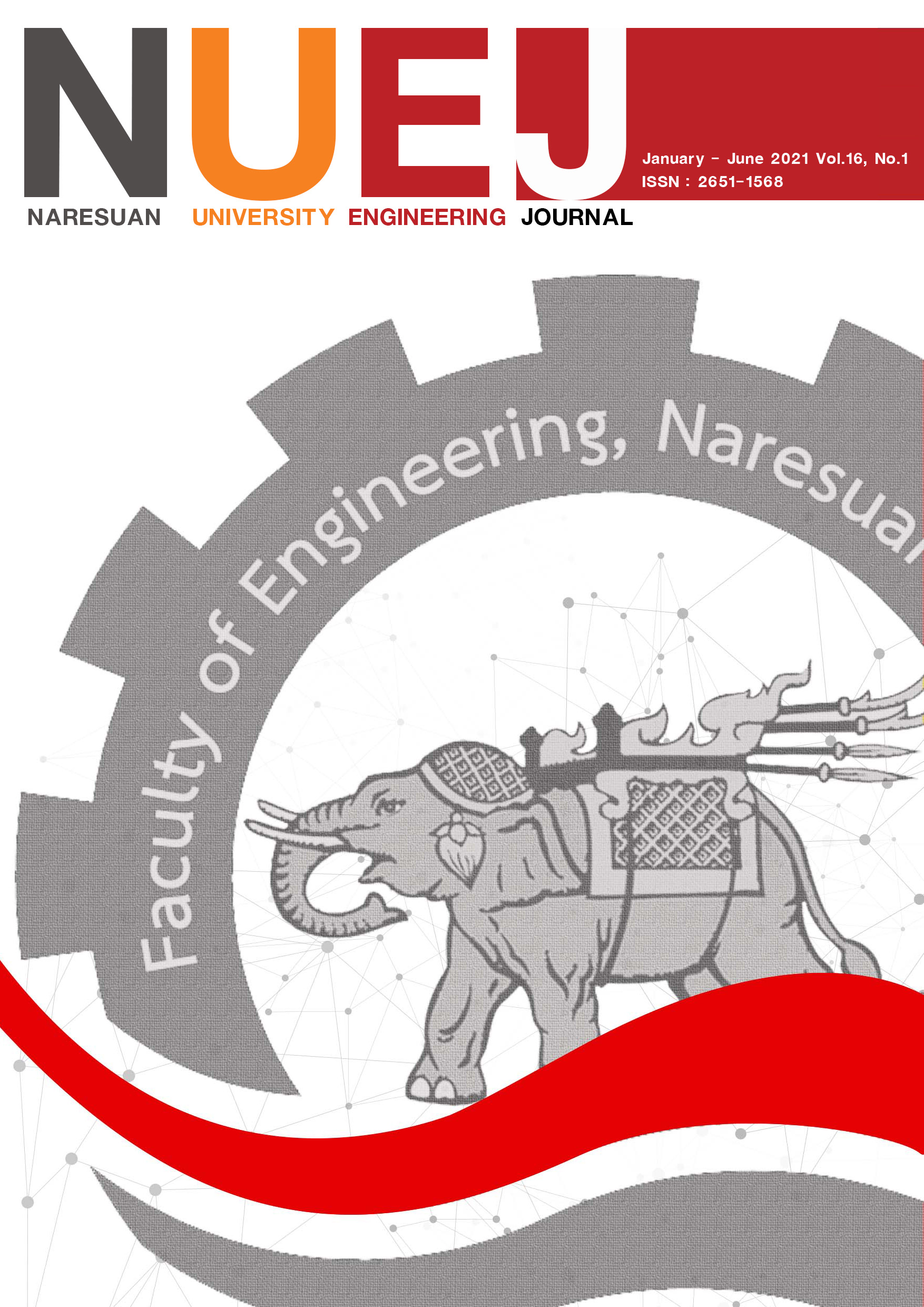Product Design with Multi-objective Optimization Generative Design Method: A Case Study of Art Deco Double Clip Brooch Design
Main Article Content
Abstract
This research proposes Multi-Objective Optimization Generative Design (MOOGD) system that searches the optimal solutions within multiple objectives. MOOGD is able to generate various and number of three-dimensional (3D) models of the solutions. The parametric design model algorithm is created to generate parametric 3D models and parametrically control shapes of the 3D models. As well as, the optimal search for multiple objectives is developed based on Strength Pareto Evolutionary Algorithm II (SPEA-II). MOOGD uses Pareto-Optimal Front method to search a set of optimal solutions. Those solutions are automatically decoded to 3D models and presented in Computer-Aided Design (CAD) software to designers. MOOGD, therefore, works as a decision support tool in product design process. The research methodology is presented via a case study of the design of Art Deco double clip brooch with two objectives: minimum weight of the brooch, while maximize golden ratio of the brooch. The research methodology can be applied to design other industrial products.
Article Details
References
Agarwal, M., & Cagan, J. (1998). A blend of different tastes: the language of coffeemakers. Environment and Planning B: Planning and Design, 25(2), 205-226.
Best, J. W. (1981). Research in education. Prentice-Hall.
Brintrup, A. M., Ramsden, J., & Tiwari, A. (2007). An interactive genetic algorithm-based framework for handling qualitative criteria in design optimization. Computers in Industry, 58(3), 279-291.
Brintrup, A. M., Ramsden, J., Takagi, H., & Tiwari, A. (2008). Ergonomic chair design by fusing qualitative and quantitative criteria using interactive genetic algorithms. IEEE Transactions on Evolutionary Computation, 12(3), 343-354.
Chuthavipa, W. (2002). Jewelry design. The Publisher of Chulalongkorn University.
Davidson, S. (2017). Grasshopper Algorithmic Modeling for Rhino. Grasshopper. http://www.grasshopper3d.com/
Deb, K. (2011). Multi-objective Optimisation Using Evolutionary Algorithms: An Introduction. Springer London.
Dou, R., Zong, C., & Nan, G. (2016). Multi-stage interactive genetic algorithm for collaborative product customization. Knowledge-Based Systems, 92, 43-54.
Hu, Z. H., Ding, Y. S., Zhang, W. B., & Yan, Q. (2008). An interactive co-evolutionary CAD system for garment pattern design. Computer-Aided Design, 40(12), 1094-1104.
Insuya, J., Laokafang, P., Jitkwang, P., Chomphooja, S. & Ratanamano, S. (2016). Adolescents and middle-aged. Human cmu. http://human.cmu.ac.th/home/hc/ebook/006305/07-teenage.pdf
Jongyoklang, S. (2012). Elements of jewelry design. Blogger. http://blackevil408.blogspot.com/p/blog-page_6677.html
Kang, B. (2014). Covetable Convertible - Art Deco Jewels. http://revivaljewels.com/blog/2014/7/8/ how-to-get-additional-wardrobe-mileage-from-your-jewellery
Kielarova, S. W., & Pradujphongphet, P. (2013). Development of generative jewelry design system using shape grammar method: a case study of jewelry ring design. Naresuan University Journal: Science and Technology, 8(2), 21-34.
Kielarova, S. W., & Sansri, S. (2016, December). Shape optimization in product design using interactive genetic algorithm integrated with multi-objective optimization. In International Workshop on Multi-disciplinary Trends in Artificial Intelligence (pp. 76-86). Springer.
Likert, R. (1961). New patterns of management. McGraw-Hill.
Lipson, H., & Shpitalni, M. (2000). Conceptual design and analysis by sketching. AI EDAM, 14(5), 391-401.
Lu, S., Mok, P. Y., & Jin, X. (2014). From design methodology to evolutionary design: An interactive creation of marble-like textile patterns. Engineering Applications of Artificial Intelligence, 32, 124-135.
Martinez, S. (2016). Dress Clips. Lang Antiques http://university.langantiques.com/index.php/Dress_Clips
McNeel, R. (2017). Rhinoceros. Rhinoceros. https://www.rhino3d.com/
Mouillefarine, L., & Posseme, E. (2009). Art deco jewelry: modernist masterworks and their makers. Thames & Hudson.
Nayutthaya, P. (2008). Design and analysis of experiments. Top Publishing.
Sansri, S. (2018). Development of generative jewelry design system with interactive evolutionary multi-objective optimization for art deco double clip brooch design (Unpublished master’s thesis). Naresuan University.
Sansri, S., & Kielarova, S. W. (2018). Multi-objective shape optimization in generative design: art deco double clip brooch jewelry design. In IT Convergence and Security 2017 (pp. 248-255). Springer, Singapore.
Séquin, C. H. (1997). Virtual prototyping of scherk-collins saddle rings. Leonardo, 30(2), 89-96.
Shibuya, M., Kita, H., & Kobayashi, S. (1999). Integration of multi-objective and interactive genetic algorithms and its application to animation design. 1999 IEEE International Conference on Systems, Man, and Cybernetics (pp. 646-651). IEEE.
Singh, V., & Gu, N. (2012). Towards an integrated generative design framework. Design studies, 33(2), 185-207.
Sinjaru, T. (2012). Research and statistical analysis with SPSS and AMOS. Business R & D Ordinary Partnership.
Soddu, C. (1994). GENERATIVE ART. http://www.soddu.it/design/GA_soddu_e.htm
Sun, X., Gong, D., & Zhang, W. (2012). Interactive genetic algorithms with large population and semi-supervised learning. Applied Soft Computing, 12(9), 3004-3013.
Takagi, H. (2001). Interactive evolutionary computation: Fusion of the capabilities of EC optimization and human evaluation. IEEE, 89(9), 1275-1296.
Takagi, H. (2001). Interactive evolutionary computation: Fusion of the capabilities of EC optimization and human evaluation. IEEE, 89(9), 1275-1296.
Tang, C. Y., Fung, K. Y., Lee, E. W., Ho, G. T., Siu, K. W., & Mou, W. L. (2013). Product form design using customer perception evaluation by a combined superellipse fitting and ANN approach. Advanced Engineering Informatics, 27(3), 386-394.
Vierlinger, R. (2017). Octopus. Octopus. http://www.food4rhino.com/app/octopus
Yamane, T. (1970). Statistics : An Introductory Analysis. Harper & Row.
Yotongyos, M. (2016). Questionnaire for research. KM_Research. www.bcn.ac.th/web/2007/KM_
Research/การสร้างแบบสอบถามเพื่อการวิจัย.pdf
Zhang, L., Zhang, L., & Wang, Y. (2016). Shape optimization of free-form buildings based on solar radiation gain and space efficiency using a multi-objective genetic algorithm in the severe cold zones of China. Solar Energy, 132, 38-50.
Zitzler, E., & Thiele, L. (1999). Multiobjective evolutionary algorithms: a comparative case study and the strength Pareto approach. IEEE transactions on Evolutionary Computation,
(4), 257-271.
Zitzler, E., Laumanns, M., & Thiele, L. (2001). SPEA2: Improving the strength Pareto evolutionary algorithm. TIK-report, 103.


